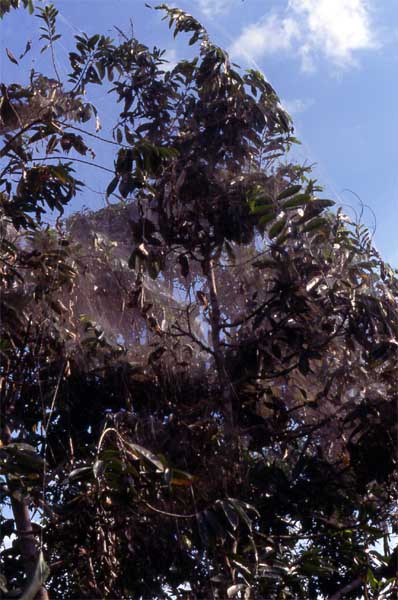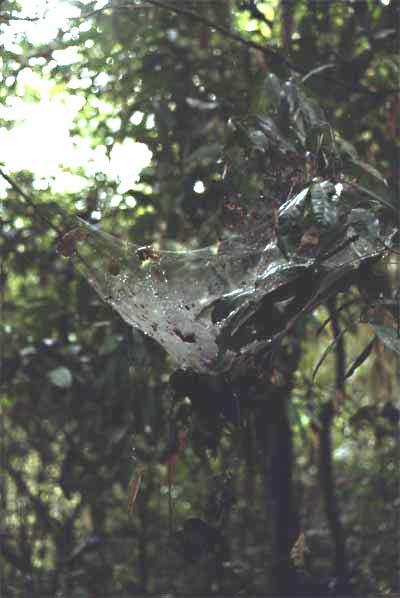SOCIAL (COMMUNAL) SPIDERS
Unique to the Amazon are communal or social spiders. All other spiders are solitary—each individual builds its own web to catch prey for itself. Social spiders build a collective web that may support hundreds of individuals. They behave synchronously, sharing silk and prey. This strategy enables the tiny spiders to ensnare prey that would otherwise be too big for them to handle. Although the behavior is social, the spiders lack characteristics of social insesct colonies, such as the caste system with its division of labor into queen, worker, drone, etc. |
Click below to see the photos and information on social spiders:
social spider web
funnel-shaped web
SOCIAL SPIDER WEB
return to gallery
Along river edges are commonly seen vast expanses of spider webs—an amazing "web sight"! These are the home of social spiders that actually measure no more than a quarter-inch long. Hundreds of individuals may share a web, feeding together on prey much larger than would be available if they built individual webs. The picture above is the web of Anelosimus eximius, a common Amazon species. |
FUNNEL-SHAPED WEB
return to gallery
The funnel shape of the communal spiders' web is a form that maximises the chance to capture prey falling from the canopy above. |
Learn about communal spider natural history
previous photos
|
next photos
|
|---|







